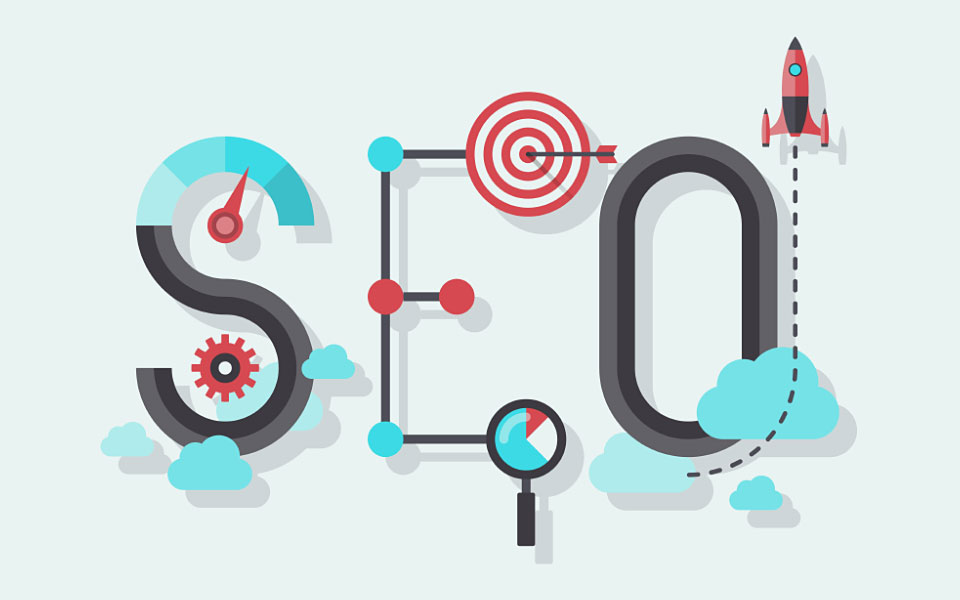An e-commerce Guide to the Choice of Magento or Woocommerce
Launching an e-commerce website requires a lot of considerations. Some of which include digital marketing success factors, choosing your ecommerce platform like Magento and WooCommerce being well known favorites in creating e-commerce websites.
But like in every decision making process especially when it involves starting a new business, the choice of which application with which to build your website will be guided by the user’s needs, budget, and experience.
In this article, we examine the pros and cons of both Magento and WooCommerce and hope that we provide a guide to decisions on when to use Magento or WooCommerce to build your website.
Both have their advantages and disadvantages and we shall take a look at them to provide further guide.
Brief Look at Magento
Magento is a flexible and feature-rich open-source ecommerce solution. The number of websites using Magento as at June 2021 is put at 250,000.
There are two different Magento platforms available:
Magento Community Edition, which allows anyone to modify the core system to extend functionality and add plug-in modules.
Magento Enterprise Edition, which has the same core files as community, but has more features and functionality. This is designed for large businesses requiring tech support, installation, configuration and troubleshooting, and therefore costs some money.
Also read; Best Practices for Magento Website Security
Advantages of Magento
- Multi-store allows you to operate more than one store from a single platform, for example if you want to run a store for the U.K market and another for the US market. This makes Magento a time-saving platform for your multiple store design.
- Easy payment gateway setup as Magento is already integrated with PayPal, Google Checkout, SagePay and more, but you can also add your own payment options.
- Analytics and reporting help improve your business intelligence. Assess your statistics, sales reports, product popularity and other business facts.
- Search engine optimisation (SEO) features including SEO friendly URLs and customised meta-descriptions for each product.
- Mobile optimisation ensures that the store translates well to smaller screens.
- Magento is rich in features, including ones not widely available on other channels, for example you can manage more than one storefront, and it supports multi-currency and multi-language.
- It’s incredibly user-friendly with a simplistic backend, nicely organised store management features and easy navigation.
- There’s a free version in the form of Magento Community, with the option to upgrade to its more powerful big brother – but at a high cost. The free version is perfectly fine for most sellers though.
- There’s a large community of users there to help and support you. They also develop extensions and plugins (of which there are many available – another pro for Magento) including ones for CRM, inventory management, accounting, Magento eBay integration and so many more.
- Its architecture has flexibility, allowing you to customise almost anything, so you can design your store to look exactly how you want it to be.
- It’s incredibly powerful (yes, even the free version) and can easily handle 10,000 products and more.
Disadvantages of Magento
- While the community version is free, the Enterprise version is very much expensive – it can cost as much as $10,000 or more, which is well out of reach for the casual seller.
- It can be incredibly hard to source decent Magento developers because of its huge and complicated codebase.
- Because of its complexity (which is necessary to make Magento so flexible), making customisations can take a lot of time.
Magento Performance Optimizzation
Magento is one of the most popular CMS platforms that are available in the market for e-commerce websites. Magento performance optimization becomes important and a top priority in order to make it work properly. Here are the critical areas of Magento website optimization that makes it work smoothly.
Hosting Environment
You need a hosting environment that can support the traffic generated by by your e-commerce website. The hosting server should be able to handle heavy load. This is mainly required to manage the huge traffic of your website. You need to choose a server that is geographically located near your target audience.
Server & Caching
You can enable gzip compression and also enable server caching and browser caching. Across a Content Delivery Network (CDN) you can store temporary data in multiple locations. This will help your users to enjoy high availability and accessibility of the website even during rush hour. In fact, usage of web application accelerators like Varnish can speed up the Magento based store by upto 80%.
Magento Database Optimization
Magento database optimization is one of the key factors to run a successful eCommerce website. You need a database which is optimized. You can increase the database performance using query indexing and you can use the db management systems in order to optimize the database frequently.
Magento Compilation Feature Integration
It is better to install a composer of Magento and compile the files to make a static resource in your system. This makes the accessibility of the browser easier.
Code Optimization
Use the PHP accelerator and uninstall all the unnecessary PHP or Apache modules which you do not use. You need to examine and identify the loopholes in your code both for front and back-end. In order to maintain magento performance you will have to make sure that you take care of the code optimization. There are several performance optimization tips for magento that can help you get the best result.
Version Upgrade
It is necessary to upgrade to the latest Magento version, this will help with better Magento performance, offer new added features, and help in fixing bugs. These are the main reasons why you need to get the latest version of Magento.
Auto Scaling
Auto scaling is mainly allocation process, which helps in server resource scaling depending on the traffic situation. This is to say that in a holiday season, there is bound to be heavy traffic, but with the help of the auto scaling, you will get added server that will help you manage more and more traffic.
Configuration For Magento Performance Optimization
You need to uninstall extensions that you don’t use. This is rather important to get a proper functioning eCommerce website. Clearing all the caches and get rid of the unnecessary extension will definitely boost the performance.
Standardize The File Size
An effective way to make Magento work is to decrease the size of the file. Reducing the file size using a compressor and check the size of image that can be uploaded. You need to minify the template images so that it can be compatible.
Merge the Javascript and CSS files
You need to combine the Javascript and CSS with the help of the advanced configuration that is available in the Magento admin. This will reduce the load time of the website and therefore, your customers will be much more comfortable hovering on your website.
An overview of WooCommerce
WooCommerce is WordPress’ most popular plugin and is essentially a toolkit for turning your existing WordPress site into a fully functional store. It’s free.
You can use WooCommerce to sell anything, including downloadables like eBooks, MP3’s, video content and it’s easy to customize with plenty of great-looking storefront templates to choose from, as well as the option to create your own unique designs so you can get your branding across. It also has a range of free and commercial extensions, so you can optimise your shop however you want.
Advantages of WooCommerce
- WooCommerce is built to integrate with WordPress, which means it’s a great option for those who are already using WordPress and are looking to build a webstore.
- It’s expandable, so you can add whatever features you want onto your store.
- You’re granted full control of your content and store.
- WooCommerce has strong SEO capabilities thanks to WordPress, plus the dozens of SEO plugins available, so you can make your store more visible in search engines.
- There are plenty of existing themes to choose from, many of which look sleek and professional.
- A wide catalogue of extensions to choose from, including customer support, integration with Amazon’s store, subscriptions, booking and more.
- The number of products and categories is not limited.
- There is a large number of users and support groups who are willing to help other users out.
Disadvantages of WooCommerce
- The “free” price tag seems too good to be true – and can be. While WooCommerce is free, many of the other plugins aren’t, and these are needed if you want to make a store that goes beyond the basics.
- WooCommerce doesn’t offer a hosted solution yet, which means you’ll need to take care of security and other hosting issues yourself, or find a partner.
Which one is best for you?
Magento and WooCommerce offer similar features and functionality, so it’s going to be a tough decision.
Both platforms are free, but they’re both so basic that you’d need to jazz them up with a variety of extensions and plugins to create a serious online store. Magento offers more powerful stores for much larger businesses, but these cost a lot more than it would to simply throw a few extensions on a WooCommerce store.
Both are highly flexible and customisable options when it comes down to design, but Magento is slightly more powerful than WooCommerce, and is great if you’re a developer who has the skill to create truly individual and beautiful stores. It’s also far more expensive to find a Magento developer because they need to know the highly complex system really well.
Neither platform offers free support. The official Magento community is a great source for finding help with issues. WooCommerce lacks an equivalent alternative, although there are many WordPress and WooCommerce-centric forums out there where you could search for solutions to any issues.
Ultimately it comes down to your own personal circumstances, budget and experience. If you’re a serious seller looking for a highly powerful store, have the money to pay developers or have the skill to do it yourself, and are looking to expand massively, then Magento is probably better for you. If you’re a newer seller or if you already uses WordPress, then WooCommerce will probably be a better option.
Optimizing WooCommerce Website
A large WooCommerce web shop can be quite slow if you don’t optimize it. Here we give you 5 ways to optimize your WooCommerce store for super fast loading speed:
1. Increase WP Memory Limit
To check your WP Memory Limit, go to WordPress admin > WooCommerce > System Status and check the value for WP Memory Limit. Default is 64 MB. Increase it to 96 or maybe 128 MB by editing your wp-config file. Somewhere around row 83, just under define(‘WP_DEBUG’, false);, add these rows (if they are not there already) and adjust the values:
define( ‘WP_MEMORY_LIMIT’, ‘128M’ );
define( ‘WP_MAX_MEMORY_LIMIT’, ‘256M’ );
More than 128 is usually not recommended.
Note that it is useless to set a value that is higher than the server’s PHP memory_limit. With ServeU.net hosting, you can set the PHP memory_limit yourself in the hosting control panel without file editing. With many other hosts, you change it by editing the php.ini file. If you’re with a host where you can’t access your php.ini, you can try to set it by adding the following line to your .htaccess file:
php_value memory_limit 128M
2. Optimize images
With a good image optimizer, you can make your pictures a lot smaller, which will of course speed up your WoCommerce store. There are several options out there. The good ones typically starts for free but if you have many images, you will have to pay a few bucks. But it is worth it.
3. Use a Cache Plugin
You must use a cache plugin. The best option is WP Rocket (we have no affiliation with them). It’s a premium plugin but it is absolutely worth the bucks if you are serious about your WooCommerce shop. WP Rocket is extremely easy to configure and gives you the best performance out of the box.
If you want a free caching plugin and are not afraid of diving in to lots of options, you can try W3 Total Cache. But be ready to spend some time to experiment on what options suits your site and hosting environment best. W3 Total Cache includes a minifier (see next point).
WP Super Cache is a free plugin that is bit easier to configure than W3. Both are great plugins that can do a lot for your overall site speed.
Another free option that is really easy to set up is Cache Enabler. But note that you may need to exclude the WooCommerce cart and checkout URLs from caching to make it work.
4. Optimize your CSS
Many of your plugins render their own CSS files. Your theme and your child theme produces their CSS:es. WooCommerce adds yet more CSS. A minifier plugin can compile and compress your CSS styles and make them load much faster. AssetsMinify is a popular plugin.
5. Use Varnish Cache
We have seen huge performance boost for WooCommerce sites using Varnish Cache. But Varnish has to be properly configured for WooCommerce.
editor's pick
latest video
news via inbox
Nulla turp dis cursus. Integer liberos euismod pretium faucibua



